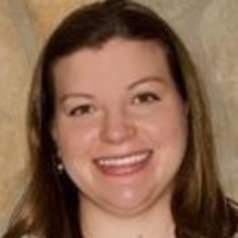During the hours after midnight on March 3, 2020, tragedy struck middle Tennessee when a tornado ripped through the region, traveling over 50 miles from West Nashville to near Gordonsville. Another tornado formed from the same system shortly afterward, near Cookeville. Preliminary damage assessments estimate that the most intense portion of this storm produced a strong EF3 tornado, with winds up to 165 miles per hour.
At the time of this writing, 25 people are confirmed dead. At least 18 of those victims were located at the end of the storm’s path. Dozens more people are still missing.
For many Americans, the thought of an overnight tornado is just a nightmare. But for Tennessee residents, it is a regular and terrifying reality. Nearly half of tornadoes that occur here strike when the sun is down.
We are hazardous weather climatologists working in and researching the climate of middle and east Tennessee. We analyze data to tell a story about hazards posed by local climatic conditions, and the public’s perception of and preparation for those hazards. As extreme events unfold, we see these intersections play out in real time, just as we did in this recent disaster.
Video of the tornado that touched down north of downtown Nashville on March 3, 2020.
Tornado timing
Tornadoes in Tennessee and the Southeast region are unique, in that a relatively large proportion of tornadoes occur at night. Nighttime events, as well as those outside of the spring season, are common in this region because the ingredients for storms are different from those that occur in the area of the central and southern Plains typically called “Tornado Alley.”
In a 2019 study with social science collaborators, we surveyed over 1,800 Tennessee residents about their perceptions of local tornado climatology. Some participants recognized that about half of their tornadoes happened at night, but many others believed that either few or all twisters struck after dark.
Researchers are particularly concerned about how the public understands and manages the threat of nighttime tornadoes because these events are more than twice as likely to be fatal than those that occur during the day. There are a few potential explanations for heightened nighttime fatality rates.
First, tornadoes at night are harder for storm spotters and the public to see. Second, people may be asleep and not receive a tornado warning. Finally, at night people are more likely to be in structures such as mobile homes, where they are more vulnerable than they would be in an office building or a structure tied to a foundation during a daytime storm.
What to do if a tornado warning sounds in your area.
Waking to a warning
Weather forecasters issued warnings as the March 3 tornadoes took form, but it’s hard to know whether middle Tennessee residents awoke to sirens, cellphone alerts or other alarms.
Our research suggests that many Tennessee residents may not receive advance warning for a tornado at night. When asked whether and from where they would most likely receive a tornado warning at night, fewer than half of our survey participants believed they would receive such a warning.
People receive weather-related warnings in a variety of ways, some of which are not well suited for nighttime events. For example, some of our survey participants listed sources like social media and local television, but these outlets can’t wake people from sleep.
During the March 3 event, these sources were active and informative for people who were already awake – especially the Twitter account @NashSevereWx, which works closely with the National Weather Service to disseminate emergency information. Local broadcast meteorologists were continuously on air from the time initial warnings were issued around midnight until the threat was over hours later. However, many middle Tennesseans lost power during the storm, which potentially reduced their access to broadcast and social media warnings.
Sirens are another popular warning source for Tennessee residents, but relying on them to wake people during a nighttime event is unsafe. Sirens are only meant to alert people who are outside about impending weather hazards, not those who are indoors.
In the early morning hours on March 3, some people heard sirens across middle Tennessee and heeded the warning. Others wondered whether the sirens were working properly and tweeted @NashSevereWx to gather information on whether warnings were still in effect.
Wireless Emergency Alerts, which send geographically targeted, text-like messages to cellphones, are a relatively new way to spread warning information. However, in interviews we conducted in 2017, Tennessee residents expressed concern about relying on these alerts because of poor cell coverage in rural areas. Wireless alerts were used to broadcast tornado warnings across middle Tennessee on March 3, but may not have been received in some locations due to cellular service interruptions.
Experts in Tennessee recommend having multiple methods for receiving warnings at night. This strategy allows for backup options when power goes out, cellphones go down or other unforeseen circumstances occur. In a forecast discussion on the evening of March 2, the National Weather Service office in Nashville urged residents to “have a few reliable methods for receiving warnings overnight in the event they are issued.”
What worries forecasters
Because tornadoes at night are a part of the climatology in Tennessee, National Weather Service forecasters here are well aware of the associated communication challenges. One Tennessee forecaster we interviewed for our research plainly stated that tornadoes at night “scare the hell out of me” for the public, because fatalities “are a given.”
Weather professionals here are concerned about reaching a sleeping public, and noted the importance of stressing projected overnight risks before residents go to sleep. Forecasters hope that wireless emergency alerts can help them reach more people during nighttime events.
During a tornado event, communication goes two ways. Forecasters relay risk information to the public, while members of the public provide “ground truth” for those forecasts, mainly through social media. Knowing what is happening on the ground is essential during more complex forecasts. In our interviews, forecasters said that this flow of information tends to slow to a crawl at night, leaving them in the dark about actual conditions outside.
In our research, we have seen that National Weather Service offices in Tennessee have strong relationships with media outlets and other partners, and are genuinely concerned about improving public safety. As we write, they are busy surveying the damage in middle Tennessee to better understand the tornadoes that wreaked havoc in their community. By building a bridge between forecasters, their partners and their community, we hope to help further their work.



 How do halibut migrate? Clues are in their ear bones
How do halibut migrate? Clues are in their ear bones  Demography and reproductive rights are environmental issues: Insights from sub-Saharan Africa
Demography and reproductive rights are environmental issues: Insights from sub-Saharan Africa  We're in an El Niño – so why has Australia been so wet?
We're in an El Niño – so why has Australia been so wet?  8 ways to tone down the Christmas lights to help wildlife – and why we should
8 ways to tone down the Christmas lights to help wildlife – and why we should  Frozen in time: old paintings and new photographs reveal some NZ glaciers may soon be extinct
Frozen in time: old paintings and new photographs reveal some NZ glaciers may soon be extinct  How agriculture can make the most of one of the world’s biggest carbon sink, soil
How agriculture can make the most of one of the world’s biggest carbon sink, soil  New genetic research uncovers the lives of Bornean hunter-gatherers
New genetic research uncovers the lives of Bornean hunter-gatherers  'Gold' hydrogen: natural deposits are turning up all over the world – but how useful is it in our move away from fossil fuels?
'Gold' hydrogen: natural deposits are turning up all over the world – but how useful is it in our move away from fossil fuels?  Potassium in our soil is running low, threatening global food security – new study proposes a way out
Potassium in our soil is running low, threatening global food security – new study proposes a way out  ‘Legal animism’: when a river or even nature itself goes to court
‘Legal animism’: when a river or even nature itself goes to court  Crocs love feral pigs and quolls have a taste for rabbit – but it doesn't solve the invasive species problem
Crocs love feral pigs and quolls have a taste for rabbit – but it doesn't solve the invasive species problem  Cruel summer ahead – why is Australia so unprepared?
Cruel summer ahead – why is Australia so unprepared?  Humans, rats and dogs pushed the takahē into Fiordland – new genetic research maps its dramatic journey
Humans, rats and dogs pushed the takahē into Fiordland – new genetic research maps its dramatic journey  Why the long face? Experts provide a new theory for why larger mammals tend to have longer faces
Why the long face? Experts provide a new theory for why larger mammals tend to have longer faces 
































